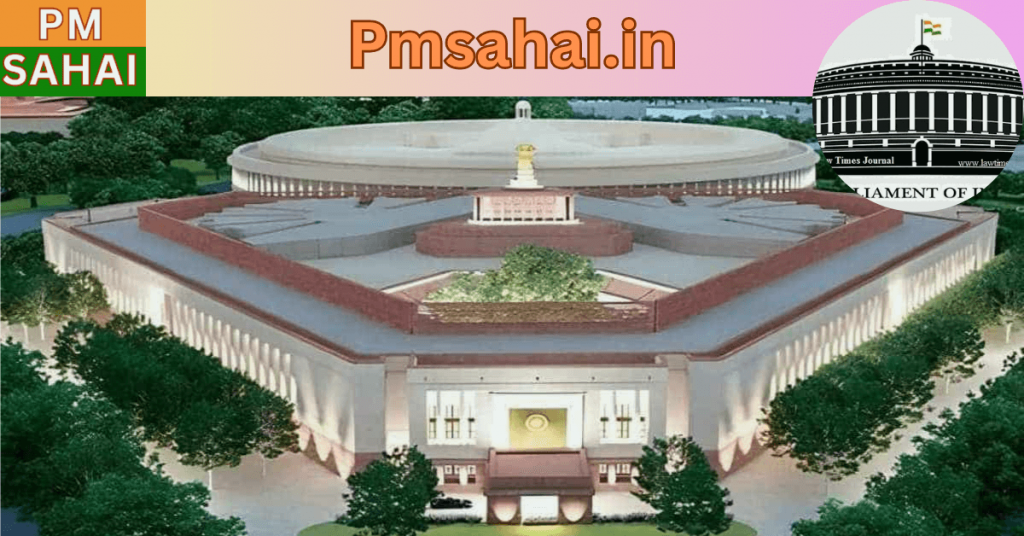The Indian Parliament 2025 Now: India, The world’s Largest Democracy, Has a Robust Parliamentary system that serves as the Backbone of its Political Structure. The Indian Parliament plays a crucial role in shaping the nation’s laws, policies, and the general governance of the country. The Parliament is where elected representatives gather to deliberate and decide the fate of the country, ensuring that the will of the people is Respected and Upheld.
1. What is the Indian Parliament?
The Indian Parliament is the supreme legislative body of India and consists of two houses:
- The Lok Sabha (House of the People)
- The Rajya Sabha (Council of States)
The Parliament is responsible for framing laws, representing the citizens, and checking the functioning of the executive branch, ensuring that the government works in the best interest of the people.
2. The Structure of the Indian Parliament
The Lok Sabha (House of the People)
The Lok Sabha is the lower house of the Parliament. It comprises Members of Parliament (MPs) who are directly elected by the people through general elections. The Lok Sabha has a maximum of 552 members, and the number of seats allocated to each state is based on its population.
The Rajya Sabha (Council of States)
The Rajya Sabha is the upper house of Parliament. Unlike the Lok Sabha, the Rajya Sabha members are not directly elected by the public. Instead, they are elected by the elected members of the State Legislative Assemblies and by members of the Lok Sabha through an indirect election.
The Rajya Sabha represents the states and union territories of India and has 245 members, of which 233 are elected, and 12 are nominated by the President of India for their expertise in fields like literature, science, art, and social service.
The President of India
The President of India plays a ceremonial role in the functioning of the Parliament. Though the President is the formal head of the Parliament, the real legislative power lies with the two houses. The President’s role is primarily to summon and prorogue sessions, give assent to bills, and appoint the Prime Minister.
3. Functions of the Indian Parliament
The Indian Parliament performs several critical functions that are vital for the proper functioning of the country. Some of these include:
1. Legislation
One of the most important functions of Parliament is to make laws. Any proposed law is introduced as a bill, which is discussed and debated in both the Lok Sabha and Rajya Sabha. Once both houses approve the bill, it is sent to the President for approval and becomes a law.
2. Representation of the People
The Parliament represents the people of India. Each MP is elected to represent a specific constituency, and through their elected representatives, the people have a voice in the legislative process.
3. Scrutinizing the Government
The Parliament holds the government accountable through various means, such as debates, question hours, and motions. It questions the government on its policies, actions, and expenditure, ensuring transparency and accountability.
4. Passing the Budget
The Parliament plays a central role in approving the annual budget. The government presents the budget to the Lok Sabha, and it is Debated, Amended, and Passed by the House. The Rajya Sabha can suggest changes but Cannot Veto the Budget.
5. Impeachment
The Parliament holds the power to impeach the President of India and other high-ranking officials, such as the Chief Justice of India and the Comptroller and Auditor General, if they are found guilty of misconduct.
4. The Legislative Process in Parliament
The legislative process in India begins when a bill is introduced. A bill can be introduced in either the Lok Sabha or Rajya Sabha, but it must be approved by both houses before it can become a law. The bill undergoes several stages, including debates, scrutiny, and amendments. After passing both houses, the bill is sent to the President for assent.
There are two types of bills: ordinary bills and money bills. Money bills, which deal with national finances, can only be introduced in the Lok Sabha and must be passed within 14 days by the Rajya Sabha.

5. Challenges Faced by the Indian Parliament
Despite being an essential institution in India’s democracy, the Parliament faces several challenges:
- Disruptions and Protests: The Parliament often witnesses disruptions, which sometimes hinder the effective functioning of the legislative process. Protests by opposition parties or disruptions during debates can delay critical legislation.
- Low Productivity: The productivity of the Parliament has sometimes been questioned due to the frequent adjournments of sessions and the limited time spent on discussing critical issues.
- Complexity of Legislation: Given the diverse socio-political landscape of India, creating laws that address all sections of society can be challenging.
The Indian Parliament 2025 Now: Conclusion
The Indian Parliament 2025 Now: The Indian Parliament is a vital institution that Plays a Central role in Maintaining Democracy, Framing Laws, and keeping The Government Accountable. As the legislative arm of the Indian Government, it Reflects the will of the people and ensures that India’s vast and diverse Population is Represented in Governance. The Indian Parliament Continues to Evolve and Adapt to The Changing Needs of the Nation, Striving to make India a better, more inclusive Democracy for all its Citizens.

